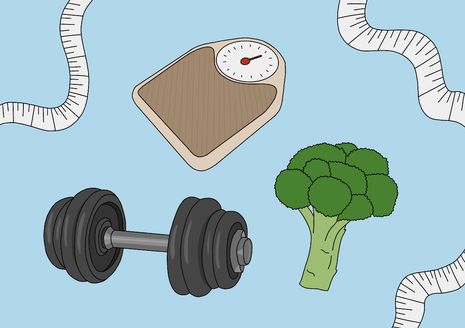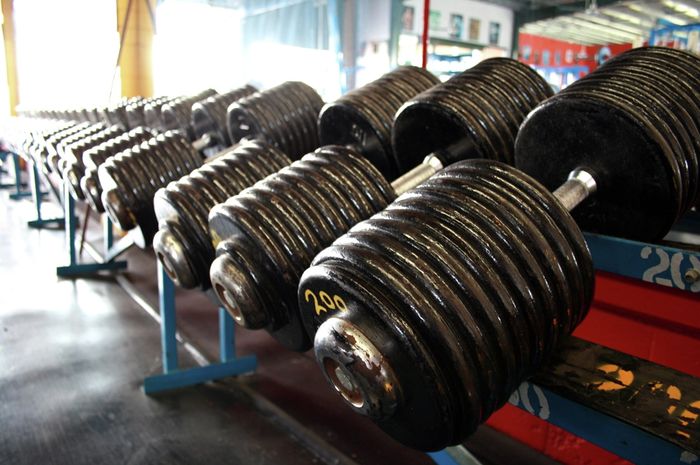Navigating the growing toxicity of gym culture
Sarah Walton-Smith discusses her experience of seeing detrimental fitness ‘advice’ on social media

Fitness culture, specifically surrounding the gym and weight training, has been on the rise in recent years. Refreshingly for women, the desire to be strong and build muscle has overtaken the cardio crazes of the 80s and “heroin-chic” beauty standards of the 90s. As for men, the goal of being “chiseled” has been blown out of proportion, with the focus no longer toned definition but significantly large muscles.
This shift certainly has some positive aspects. The benefits of weightlifting, such as protecting bone health and muscle mass and boosting metabolic rate, have been widely researched. Yet with this greater interest has come the rise in a gym culture that can be as obsessive and restrictive as the fitness trends of previous decades, potentially even worse due to the negative impact of social media and fitness influencers. How can we navigate this toxicity and develop a healthy relationship with fitness? Part of the answer lies in exposing the online sea of unhelpful fitness advice and replacing it with an approach to exercise that prioritises balance and choice.
“Defying the influencer’s orders, you don’t have to measure out every gram of rice in order to fuel your body for the gym”
Discussions concerning a regimented gym diet encourage unhealthy attitudes towards nutrition. Many influencers advise that we track our macronutrients, consume very large quantities of protein, and eat exclusively “clean” foods, which they claim helps them “feel [their] best”. This inevitably links restrictive eating to an idea of wellness, when in reality forcing yourself to cram down masses of protein and limiting yourself to whole grain carbs promotes anything but a healthy balance.
Such an obsession over food can be mentally draining, as well as impractical for busy students who simply cannot afford to buy 500g of chicken breast everyday. It’s far more realistic to try and eat a balanced plate per meal, whilst still enjoying takeaways and alcohol. Defying the influencer’s orders, you don’t have to measure out every gram of rice in order to fuel your body for the gym. Even if your nutrition is poor for a period, it’s not the end of the world and definitely not worth stressing over.
Social media and fitness influencers have also created highly unrealistic beauty standards surrounding weightlifting. With the aid of filters, Photoshop, and even good lighting and posing, it is incredibly easy to take a picture that gives you a tiny waist and big, defined muscles in the ‘right places’. Meanwhile, it’s just as easy for us to consciously, or subconsciously, compare ourselves to this ideal, with influencers convincing us it is the norm.
“Yet even if we manage to overcome diet culture and its shaming tendencies, social media still manages to ruin our confidence surrounding the very structure of our workouts”
In reality, it takes years of consistent training and food tracking to achieve an influencer’s ‘ideal’ figure, but also fitness looks different on everyone; genetics play a huge part in how weightlifting will affect your body. It’s important we remind ourselves that following an influencer’s gym routine will not necessarily give us the defined abs they claim it has given them.
Not only do we have to negotiate the constant pressure to weight lift for aesthetic purposes, there is a concerning amount of online humiliation disguised as 'gym motivation’, which actually takes the form of body shaming and dismissing other forms of exercise. I recently came across a TikTok account boasting ‘gym quotes’, which included insulting men with a “dad bod” physique and calling cardio a “red flag”. When did weightlifting become so judgemental? What if some people don’t want to focus exclusively on hypertrophy and aesthetics?
Some of us go to the gym to condition for a sport, or for its mental benefits, or simply just to move our bodies after a day sitting at a laptop. The gym is not an exclusive club for compound lifters only. Others prefer different forms of exercise to weightlifting, and this should be considered okay. Gym culture needs to celebrate, rather than dismiss, people who choose to workout in a way that they enjoy, whatever that may be.
Yet even if we manage to overcome diet culture and its shaming tendencies, social media still manages to ruin our confidence surrounding the very structure of our workouts. Constant contradictions appear about which exercises we should be doing, how often we should work out, what positioning best activates the muscles; the list is endless. For example, if you type into Google: “are deadlifts good for you?”, the top two websites that appear argue opposite opinions. How are we supposed to decipher these online paradoxes? Surely doing whatever feels good for you and your own body, whenever you feel you can fit it in, is enough, but this judgement feels increasingly harder to come by.
Although not all fitness influencers are responsible for promoting such toxic messages, the swamp of social media makes it hard for us to keep our heads above the water. So-called die-hard fitness freaks, who ultimately amass a large following, promote a way of living that is simply unsustainable and unhealthy, as well as unachievable, for a full-time student who is trying to balance exercise, work, societies, and socialising all at once.
It is okay for fitness to be one of many priorities rather than the single most important one. It should be there to add enjoyment and health to your life, not to obsess over and exacerbate society’s unhelpful body standards, which are constantly shifting anyway. Don’t let social media make you question whether the way you exercise is good enough; fitness is personal, and only you know what makes you feel the most physically and mentally happy.
 Comment / Plastic pubs: the problem with Cambridge alehouses 5 January 2026
Comment / Plastic pubs: the problem with Cambridge alehouses 5 January 2026 News / New movement ‘Cambridge is Chopped’ launched to fight against hate crime7 January 2026
News / New movement ‘Cambridge is Chopped’ launched to fight against hate crime7 January 2026 News / Uni-linked firms rank among Cambridgeshire’s largest7 January 2026
News / Uni-linked firms rank among Cambridgeshire’s largest7 January 2026 News / Cambridge businesses concerned infrastructure delays will hurt growth5 January 2026
News / Cambridge businesses concerned infrastructure delays will hurt growth5 January 2026 Features / Who gets to speak at the Cambridge Union?6 January 2026
Features / Who gets to speak at the Cambridge Union?6 January 2026










